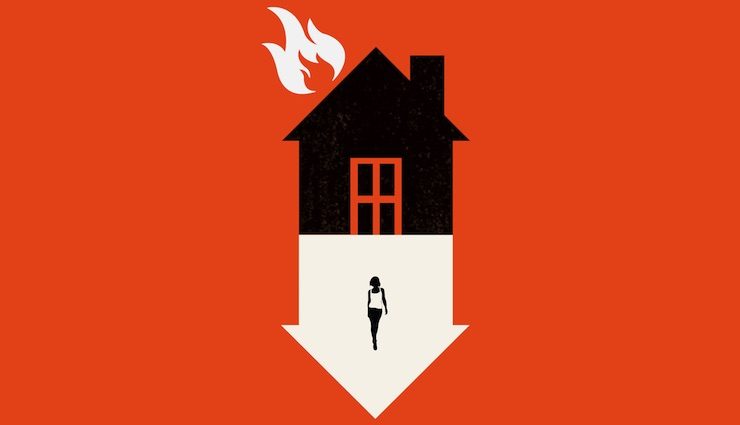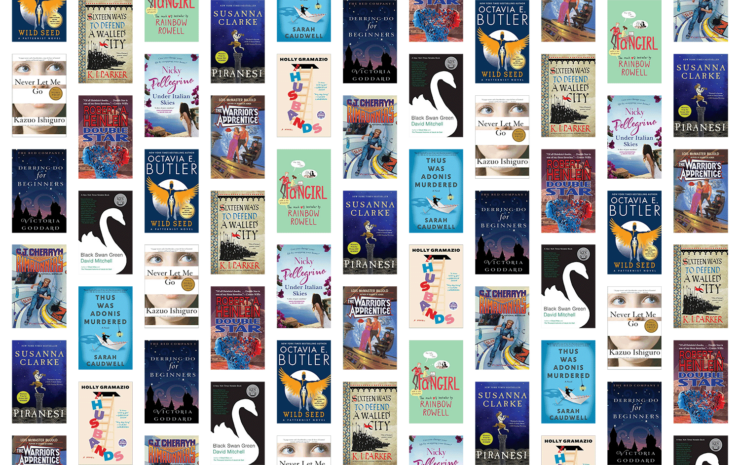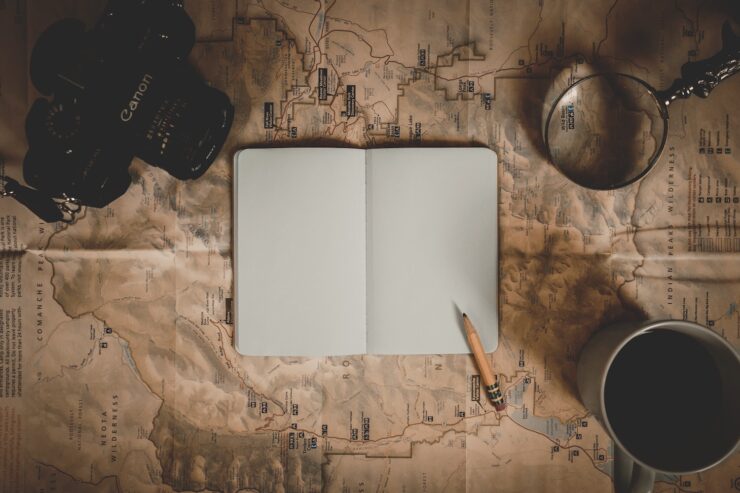I’ve been thinking quite a lot about end-of-the-world stories over the last few years (please, feel free to laugh, if need be!). I’ve been thinking about the kinds of hopes and anxieties that we’re expressing when we create and share narratives built around an apocalypse. So I wanted to take a look at a few examples—some relatively conventional, some less so—that may shed some light on why we’re drawn to these types of stories, and how they might help us through difficult times.
First of all, a quick etymology note, for the nerdiest among us, to help clarify the kinds of stories I’m thinking about: the word “apocalypse” comes from a Greek term which means to uncover or to reveal something hidden. To some extent, it’s more about the ways in which things change than the way they end, necessarily (but don’t those often feel the same when you’re going through them?). I’m drawn to end-of-the-world stories that aren’t just about big budget special effects wreaking havoc and grimdark cinematic escapades of inescapable doom—stories about how we face apocalyptic changes, and what comes after.
I do have friends who are binging horror movies and stories right now—the grimmer and darker the better—and have been for the past year, in a kind of cathartic masochism I can barely wrap my head around. Then again, I have other friends who want nothing to do with anything dark or frightening, who seek comfort and the gentlest of escapism, who are avoiding scary stories like the… well, you know. Both are equally valid reactions: it’s been a strange time—probably the strangest year in most of our memories! But personally, I find that there’s a kind of catharsis that comes with these types of survival-in-dark-times stories that you can’t quite get anywhere else.
I admit that I love The Day After Tomorrow mainly because one group of protagonists takes shelter in a library (and then proceed to ponder the inflammatory properties of different philosophers)—as a librarian, I enjoy those scenes more than I necessarily care for the movie’s plot or believability. But there is something interesting about watching various characters grappling with the weather and its impact, as superstorms wreak havoc like never before. They (just like those of us watching at home) can’t help trying desperately to stay ahead of the next twist—the human brain is always scrambling to figure out what’s next, based on patterns and situations that we’ve seen before, or imagined we’ve seen. It’s a good mechanism for survival when it works: that’s why we do it.
And that right there gets at the heart of the appeal of these stories: they give our brains practice runs. They let us mentally and emotionally prepare for the worst in a relatively low-stakes way. (Literally? Rule #1: Cardio.) Hands up, everyone that has at least joked with their friends about their zombie apocalypse survival plan. (Go up the stairs—and then destroy the stairs!) And while there are certainly works in which no one survives, that kind of nihilistic horror is relatively rare and generally seems to sink out of the pop culture psyche fairly quickly; as a general rule those types of stories are emotionally impactful, but they ultimately don’t give our minds anything to work with. We need the stories that show us that there’s a light, however small, at the end of the ordeal. We need the sense that there might be some solution to the overwhelming problem or crisis facing the protagonists. Fiction gives us practice dealing with huge paradigm shifts, which, notably, are much more fun to grapple with when they’re fictional…
Let’s take a look at a less conventional apocalypse story—one which nevertheless shines a light on some of the same ideas. Jojo Rabbit, if you haven’t seen it, is a story of a young German boy who, in the midst of World War II, wants to be a Nazi for reasons he himself is not entirely clear on. The framing of most WWII stories allows us to address them from a historical perspective, but Jojo Rabbit gives us Elsa, a Jewish teenager hiding in the walls of Jojo’s family home—a character who is clearly facing the end of her world, struggling to understand why she is still here and what to do with herself if she survives. Rosie (Jojo’s mother and Elsa’s rescuer) stands defiant in the face of overwhelming odds, and she teaches the two young people in her care how, even when you think you can’t survive, you can and must still plan for survival. She teaches them to focus on what lies beyond this dark and fearful moment, to live for the time when the skies finally clear and you see a new day.
And we need that. Whether facing something like an overwhelming global crisis or a more intimate, personal disaster, our minds have to be able to reach into a version of the future when we survive. That kind of thinking is a muscle, and it takes practice, especially when you’re afraid… but it’s something that you can, again, practice safely within the bounds of fictional stories.
Cory Doctorow’s novel Walkaway, again, isn’t a standard apocalypse narrative. In the book, the ultra-rich enjoy lives of extravagant luxury, and in response, more and more people have embraced the “walkaway” lifestyle, turning their back on “normal” behavior and refusing to participate in the economy, capitalism, or any part of the social structure that’s become so grossly oppressive. The rich are threatened with their own extinction, flipping the script and giving us a chance to see the changes from the other side, or underside (where I think, after all, most of us reside). If these people can turn their backs on the system and live happily with no one at the top of the food chain, then how can the ultra-rich prove that they deserve to be where they are? The status quo is irreparably broken, and the paradigm shifts are coming for “default reality.”
Doctorow’s writing leans heavily into thought experiment, which seems to drive the story more than plot at times, but that’s useful for our purposes because the characters’ philosophies are upended time and again, through massive shifts in technology as well as shifts in the cultural mindset. Doctorow also chooses to move away from conventional, pessimistic apocalyptic storytelling tropes and instead borrows from sociological studies that show that people generally *don’t* turn on each other during disasters. In fact, disasters tend to bring out some of our best behavior, a phenomenon that has surprised people again and again. That’s the best and brightest part of Walkaway: it’s a vision of the world in which, over and over, no matter what changes, people have each other’s backs, people rebuild communities, people choose forgiveness and altruism over greed. Most of the time, people help each other.
Even so, sometimes terrible things happen. Uncontrollable, huge events occur and leave us reeling in their aftermaths. Naomi Kritzer’s story “So Much Cooking!” is the coziest, scariest story I’ve read recently. (I discovered it after her post about it early last year and have compulsively reread it several times. It might be the perfect case for comfort-reading disaster stories!) Lots of apocalypse stories are about flash and bang, filled with events hurtling forward at insane speeds. “So Much Cooking!” gives us something else: a focus on the mundane, the endless waiting, the preposterous (okay, not so much anymore) notion that a lot of survival is…boring. It’s a continuous slog of day-to-day, monotonous endurance when you find yourself sometimes coping, and sometimes sinking into despair, and mostly just coasting and dazed. That should be a relief compared to facing flood or fire…but that daily grind is damn hard, too! Kritzer’s story acknowledges that even the “easy” parts of getting by can be difficult.
The found family that protagonist Natalie creates in “So Much Cooking!”, though, provides a solution to that difficulty. By keeping the kids fed and entertained, she finds a way to get herself through her own boredom and fear.
The thing that connects all of these works—and, in my opinion, ties all the best apocalypse-focused stories together—is the importance of the bonds that we have, or make, with each other. We can’t predict the future (or even the weather, some days, no matter how advanced the technology gets). But we can make plans for survival—not with the goal of being the last man standing, but with the hope of building a community with each other. Hard times are inevitable, but the one thing that remains consistent are the sparks of hope we get from each other, and the family we find or make.
Perhaps at this point you can already see the light coming back; from my far northern latitude here in Alaska, it’s more than a metaphor as the days slowly lengthen. What will you uncover? Perhaps with some luck and a little wisdom, we’ll learn and grow more than we imagined we could at the start of this long year. Keep thinking your way through, keep planning for survival, and hold tight (even if the hugs are virtual for now) to the people who spark your hope. And of course, please share any stories that bring you comfort along the way…
Originally published in March 2021.














